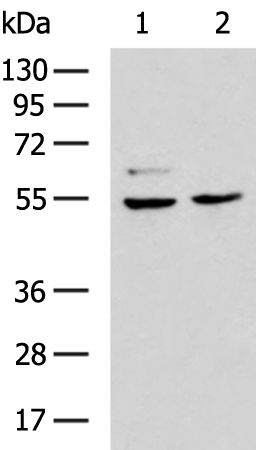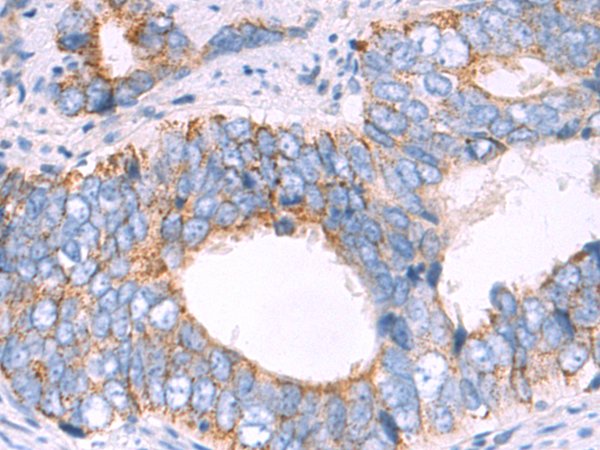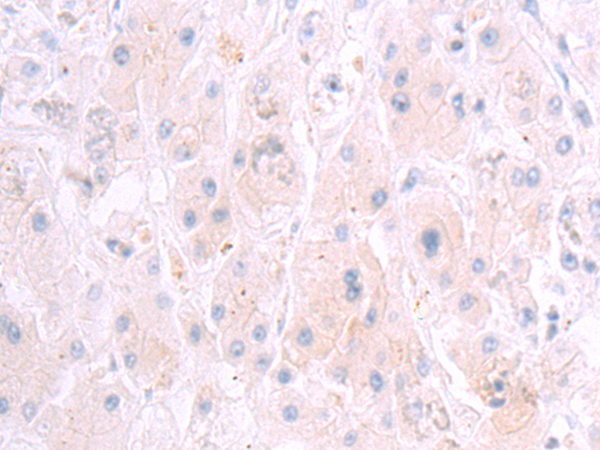


| WB | 咨询技术 | Human,Mouse,Rat |
| IF | 咨询技术 | Human,Mouse,Rat |
| IHC | 1/100-1/500 | Human,Mouse,Rat |
| ICC | 技术咨询 | Human,Mouse,Rat |
| FCM | 咨询技术 | Human,Mouse,Rat |
| Elisa | 咨询技术 | Human,Mouse,Rat |
| WB Predicted band size | 55 kDa |
| Host/Isotype | Rabbit IgG |
| Antibody Type | Primary antibody |
| Storage | Store at 4°C short term. Aliquot and store at -20°C long term. Avoid freeze/thaw cycles. |
| Species Reactivity | Human, Mouse, Rat |
| Immunogen | Synthetic peptide of human GABRA3 |
| Formulation | Purified antibody in PBS with 0.05% sodium azide and 50% glycerol. |
+ +
以下是关于GHSR抗体的3篇代表性文献,简要概括研究内容:
1. **"Characterization of a polyclonal antibody against the ghrelin receptor (GHSR-1a)"**
*Authors: Smith RG, Jiang H, Sun Y*
摘要:研究开发了一种针对GHSR-1a亚型的多克隆抗体,验证了其在免疫组化和Western blot中的特异性,并用于检测下丘脑及外周组织中GHSR的分布。
2. **"Distribution and regulation of ghrelin receptor (GHSR) in the rat brain"**
*Authors: Zigman JM, Jones JE, Lee CE, et al.*
摘要:利用GHSR特异性抗体进行免疫组织化学分析,揭示了GHSR在大鼠中枢神经系统的广泛表达,特别是在食欲调控相关核团(如弓状核)中的定位。
3. **"Ghrelin receptor (GHSR-1a) antagonism suppresses high-fat diet-induced obesity in mice"**
*Authors: Albarran-Zeckler RG, Sun Y, Smith RG*
摘要:通过特异性抗体阻断GHSR-1a信号,验证了其在抑制高脂饮食诱导的小鼠肥胖中的作用,提示GHSR抗体在代谢疾病治疗中的潜在应用。
注:以上为示例性内容,实际文献需根据具体数据库(如PubMed)检索。建议结合关键词“GHSR antibody”或“ghrelin receptor immunohistochemistry”查阅近年研究。
The growth hormone secretagogue receptor (GHSR), a G protein-coupled receptor, plays a key role in regulating growth hormone release, appetite, and energy metabolism. Primarily activated by ghrelin, an orexigenic hormone, GHSR is expressed in the hypothalamus, pituitary, and peripheral tissues. Its signaling influences feeding behavior, glucose homeostasis, and cellular proliferation. Dysregulation of GHSR is linked to obesity, diabetes, and aging-related disorders.
GHSR antibodies are essential tools for studying receptor localization, expression levels, and functional interactions. They enable detection of GHSR in tissues or cultured cells via techniques like Western blotting, immunohistochemistry, and flow cytometry. Researchers also use these antibodies to explore GHSR's role in metabolic pathways, cancer progression, and neurodegenerative diseases. Two GHSR subtypes exist: the functional GHSR1a (full-length) and the truncated GHSR1b, whose physiological relevance remains debated. Specific antibodies help distinguish between these isoforms.
Recent studies highlight GHSR's potential as a therapeutic target, driving demand for high-affinity, selective antibodies. Challenges in antibody development stem from GHSR's complex transmembrane structure and low natural abundance. Validated antibodies with minimal cross-reactivity are critical for advancing ghrelin-GHSR research and drug discovery efforts targeting metabolic and age-related conditions.
×